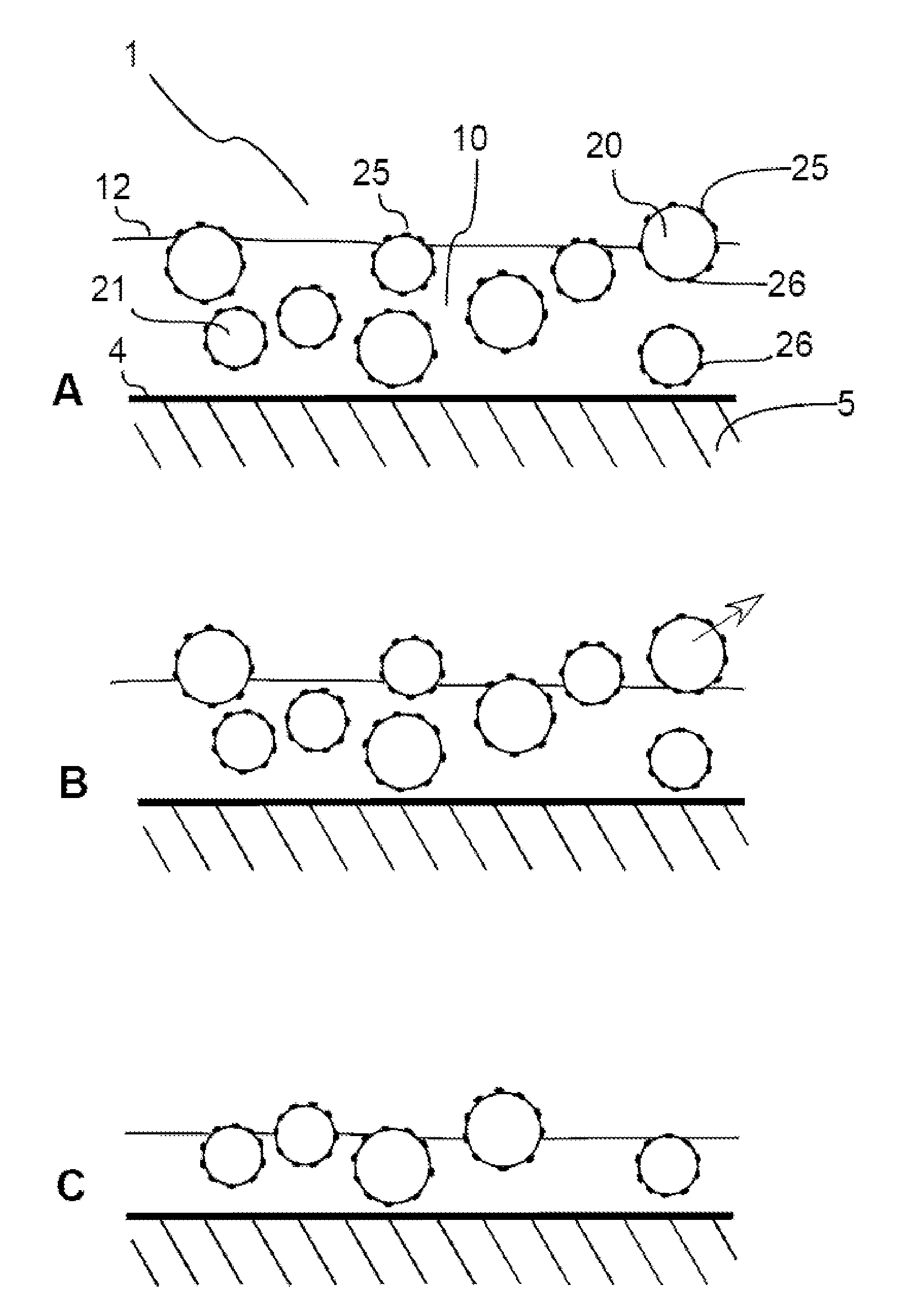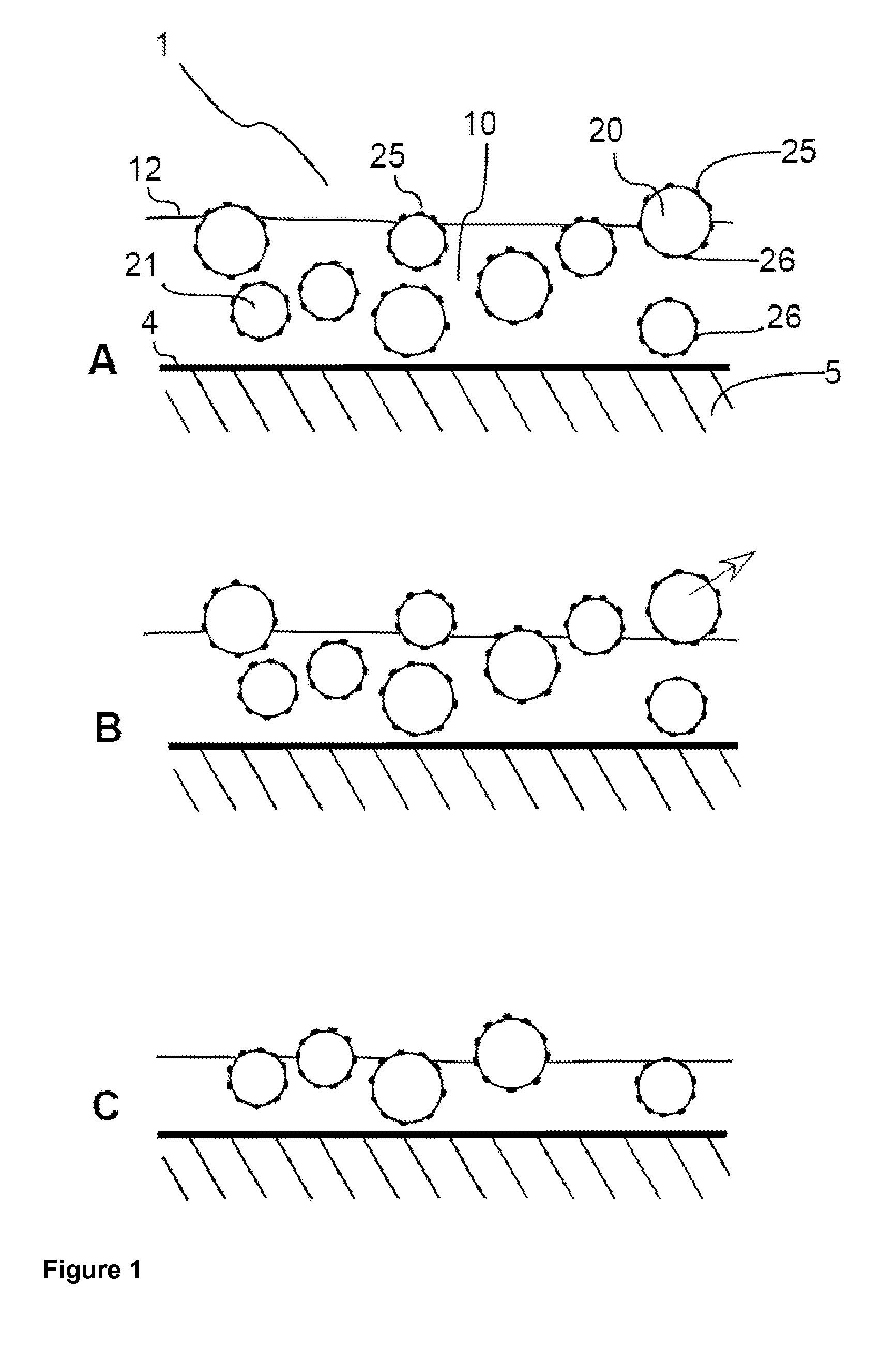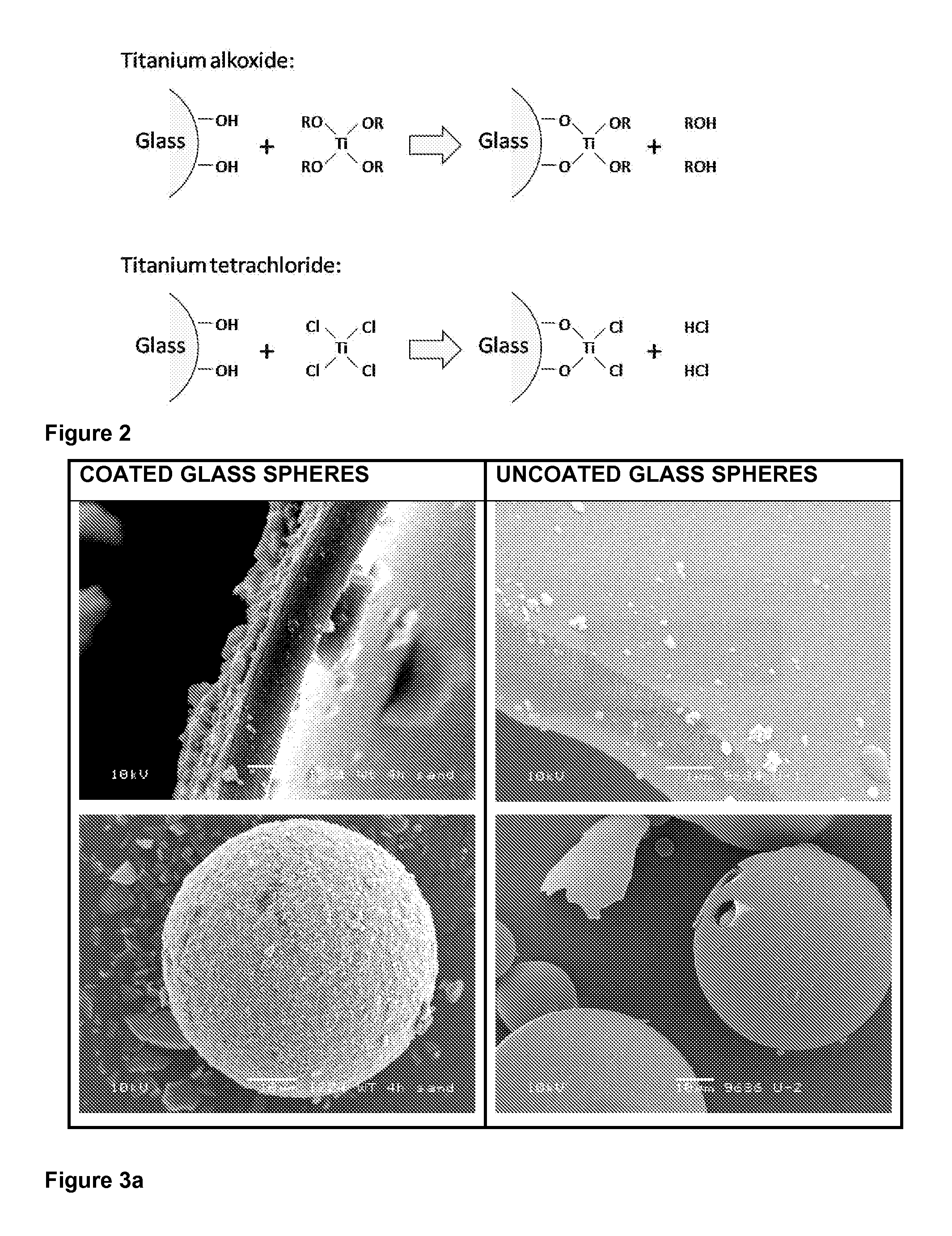Self-cleaning coating composition
a coating composition and self-cleaning technology, applied in the field of coatings or paints, can solve the problems of cracking and flaking, silicone based paints are only suitable for a limited range of applications, and are relatively expensive compared to other organic binders
- Summary
- Abstract
- Description
- Claims
- Application Information
AI Technical Summary
Problems solved by technology
Method used
Image
Examples
example 1
[0195]This example provided evidence that photocatalytic material such as anatase TiO2, can be coated onto hollow glass microspheres.
[0196]Photocatalytic TiO2 was coated onto S38 hollow glass microspheres, produced by 3M, with an average / mean size of 40 μm and an average / mean density of 0.38 g / cm3, by treating the microspheres with Vertec XL110, a titanium-tetraisopropoxide (TTIP), produced by Johnson Matthey Catalysts, followed by calcining the product afterwards to crystallize the titanium. The coating procedure was essentially as follows:
TTIP was dissolved in isopropanol and the ratio of isopropanol to TTIP was 10:1 by volume. After stirring for 20 minutes the S38 hollow glass microspheres were added to the solution in the ratio 1 g glass spheres to 1 ml TTIP and stirred for 20 minutes. Next distilled water was added to the solution in the ratio 1 ml distilled water to 1 g glass spheres and the solution stirred for 10 minutes. The solution was then filtered using a filter paper, ...
example 2
[0197]This example provided evidence that photocatalytic material such as anatase TiO2, can be coated onto hollow glass microspheres and that removing physically absorbed water from the glass bead surface gives better adhesion of the coating to the glass bead.
[0198]The coating process was performed as in example 1 but the glass beads were pre-treated by heating them to 160° C. for 4 hours and then coated immediately after being removed from the oven. The photocatalytic coating can be seen in FIG. 3a which shows a comparison of a coated and uncoated glass bead.
[0199]FIG. 4 shows x-ray diffraction patterns, measured with a Huber G670 Guinier diffractometer with a 0.005° measurement step of commercial grade anatase TiO2 provided from Sigma Aldrich, and anatase from beads coated according to Example 2. The comparison indicated that the coating was essentially anatase because both spectra have peaks at the same angles. The spectrum for the anatase provided from Sigma Aldrich was shifted ...
example 3
[0200]This example provides evidence that hollow glass microspheres coated with anatase TiO2, as described in Example 2, can accelerate the decomposition / oxidation of an organic material.
[0201]The photocatalytic activity of the beads was tested by preparing a dilute solution of an organic dye, methylene blue (MB), and mixing the coated glass beads into the solution. Thereto, 60 mg of coated beads were mixed into 30 ml of dilute MB solution in a 100 ml beaker. After the mix had reached equilibrium in the dark it was exposed for 20 minutes to UV radiation using a Dymax 5000-EC UV lamp where the irradiated area in the 100 ml beaker was around 16.6 cm2. The irradiance of the lamp was about 225 mW / cm2 and the output wavelength mainly between 350 and 400 nm. The MB concentration was determined by making a calibration curve using a Shimadzu UV-mini 1240 photo spectrometer using an appropriate 1 cm cuvette. The initially determined MB concentration of the mixture was approximately 80 μmol / l...
PUM
| Property | Measurement | Unit |
|---|---|---|
| diameter | aaaaa | aaaaa |
| particle size | aaaaa | aaaaa |
| specific surface area | aaaaa | aaaaa |
Abstract
Description
Claims
Application Information
 Login to View More
Login to View More - R&D
- Intellectual Property
- Life Sciences
- Materials
- Tech Scout
- Unparalleled Data Quality
- Higher Quality Content
- 60% Fewer Hallucinations
Browse by: Latest US Patents, China's latest patents, Technical Efficacy Thesaurus, Application Domain, Technology Topic, Popular Technical Reports.
© 2025 PatSnap. All rights reserved.Legal|Privacy policy|Modern Slavery Act Transparency Statement|Sitemap|About US| Contact US: help@patsnap.com



